Top 23 Most Profitable Gym Franchises of 2025


Franchise Opportunities By Industry
Franchise Opportunities By Location
Franchise 101
By Investment Level
Franchise Consultant
White Paper
Playbook


Want to dive into the fitness business? Franchises offer a way to build a gym with the support of a tried-and-true brand and business model.
If you're thinking about opening a gym, you have a lot of decisions to make. The first might be whether to go the independent route or to open a franchise. If you choose the latter, here are seven gym franchises with proven growth that you might want to consider.
{{gym-franchise}}
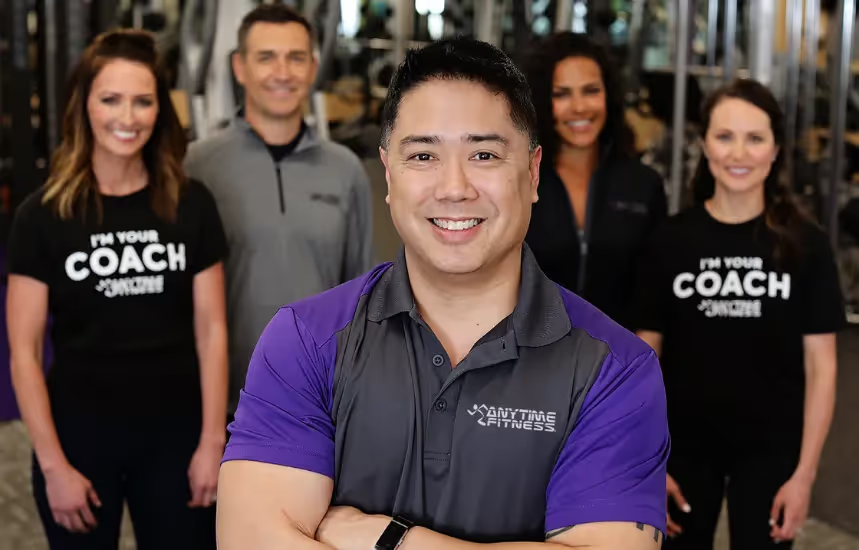
Founded in: 2001
Franchising since: 2002
Franchise Units: 4,904
Initial investment range: $98,430 - $523,824
Initial Franchise Fee: $11,409
Royalty: 6%
Model Type: 24/7 Access Gym
Key Advantage: International presence, with over 5,000 locations and a validated model that operates in communities of all sizes. A smaller footprint (4,000-5,000 sq. ft.) means less overhead.
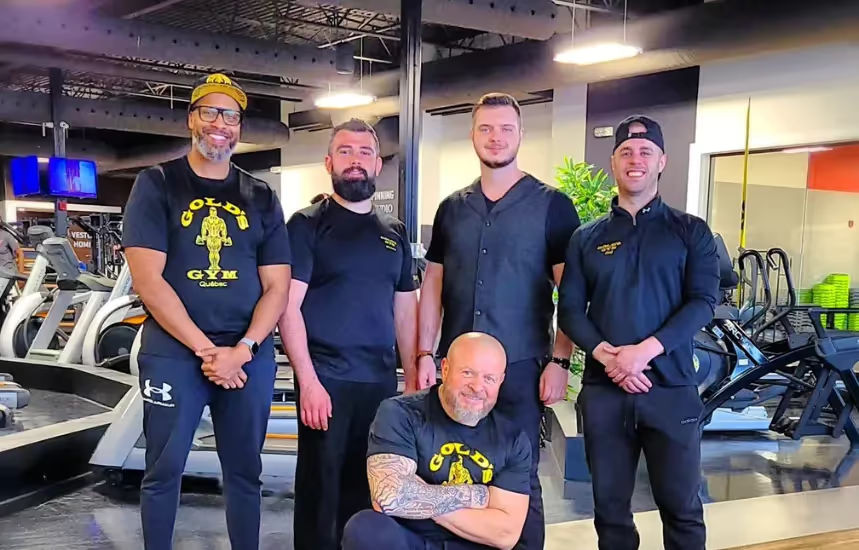
Founded in: 1960
Franchising since: 1985
Franchise Units: 550+ worldwide
Initial investment range: $2,218,250 - $5,00,500
Initial Franchise Fee: $32,000
Royalty: 8%
Model Type: Full-Service Gym
Key Advantage: A brand with over 55 years of fitness experience that is one of the most recognized in the business. A comprehensive range of services that includes not just strength training but also a wide variety of cardio and group fitness options, as well as large-scale personal training.
{{quiz-blue}}
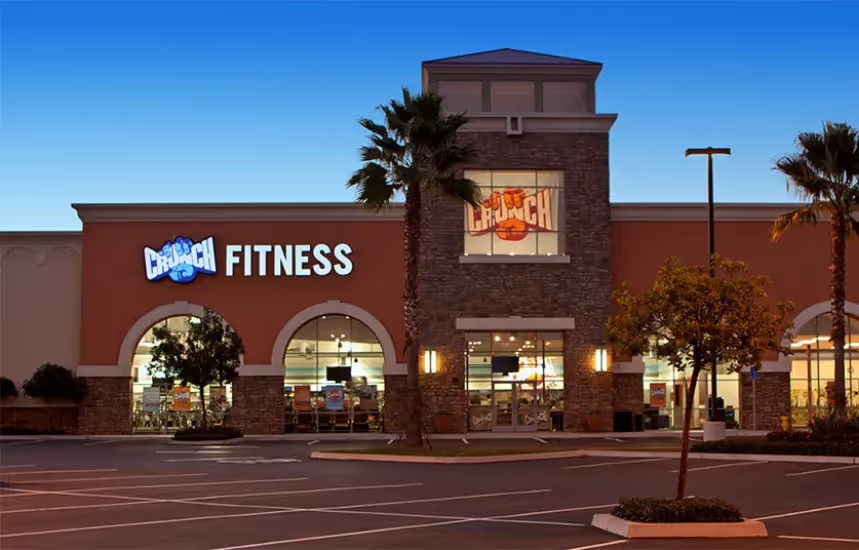
Founded in: 1989
Franchising since: 2010
Franchise Units: 265
Initial investment range: $304,500 - $2,129,500
Initial Franchise Fee: $25,000
Royalty: 6%
Model Type: Full-Service Gym
Key Advantage: Provides not only inexpensive foundation memberships but also some premium choices, a variety of memberships that appeals to a broad swath of potential patrons. Has a popular, well-known brand that projects an image that is fun, energetic, and stands out in the packed marketplace.

Founded in: 2005
Franchising since: 2006
Franchise Units: 104
Initial investment range: $941,350 - $1,622,250
Initial Franchise Fee: $69,000
Royalty: 5%
Model Type: Full-Service Gym
Key Advantage: Known for its distinctive retro branding and affordable membership model. Larger facilities (15,000-20,000 sq ft) include amenities like cardio theaters, group fitness, smoothie bars, and tanning. Strong support systems help franchisees navigate the complexities of running a full-service gym operation.
{{quiz-blue}}

Founded in: 2003
Franchising since: 2004
Franchise Units: 1,300+ worldwide
Initial investment range: $118,805 - $294,565
Initial Franchise Fee: $29,500
Royalty: 8%
Model Type: 24/7 Access Gym
Key Advantage: Operating a gym that occupies a smaller footprint (2,500-5,000 sq ft) means a lower investment in staffing and facilities. It also means you can provide a full range of gym activities (essentially, a complete workout) on a manageable scale.
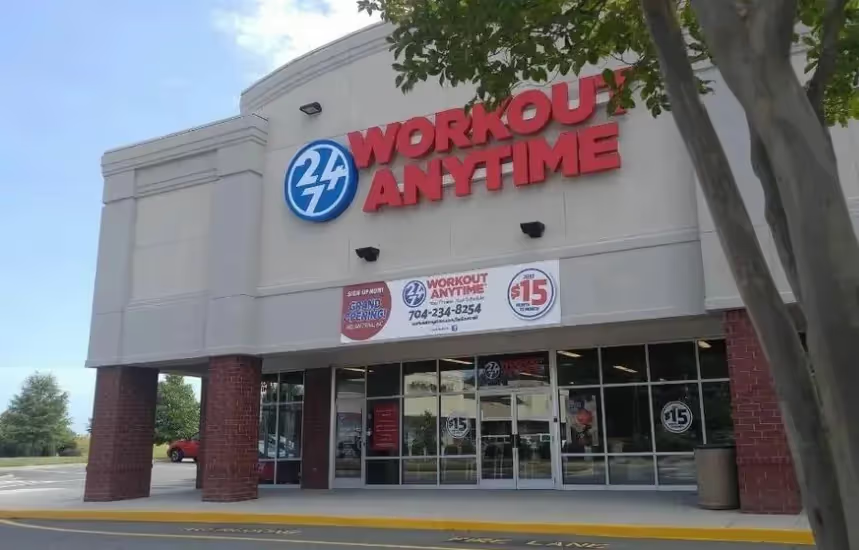
Founded in: 1999
Franchising since: 2005
Franchise Units: 156
Initial investment range: $555,500 - $996,400
Initial Franchise Fee: $135,000
Royalty: 8%
Model Type: 24/7 Access Gym
Key Advantage: A value-priced model that allows for memberships starting approximately at $19 a month. The smaller footprint and minimal staffing requirements create a more affordable entry point into gym ownership.

Founded in: 1976
Franchising since: 1982
Franchise Units: 800+
Initial investment range: $767,500 - $3,273,000
Initial Franchise Fee: $25,000
Royalty: 8%
Model Type: Full-Service Gym
Key Advantage: A recognized global brand with established presence. Provides the "old-fashioned" gym experience, with lots of strength equipment, cardio options, and space for group exercise.

Founded in: 2007
Franchising since: 2009
Franchise Units: 700 worldwide
Initial investment range: $81,175 - $150,275
Initial Franchise Fee: $7,500
Royalty: 6%
Model Type: Kickboxing Circuit Training
Key Advantage: No workout times mean people can start their 30-minute workout whenever they show up. A small footprint (1,200-1,500 sq. ft.) and minimal equipment needs keep the costs low. Total investment is below many fitness concepts that require a lot of space and a lot more equipment.
{{quiz-blue}}
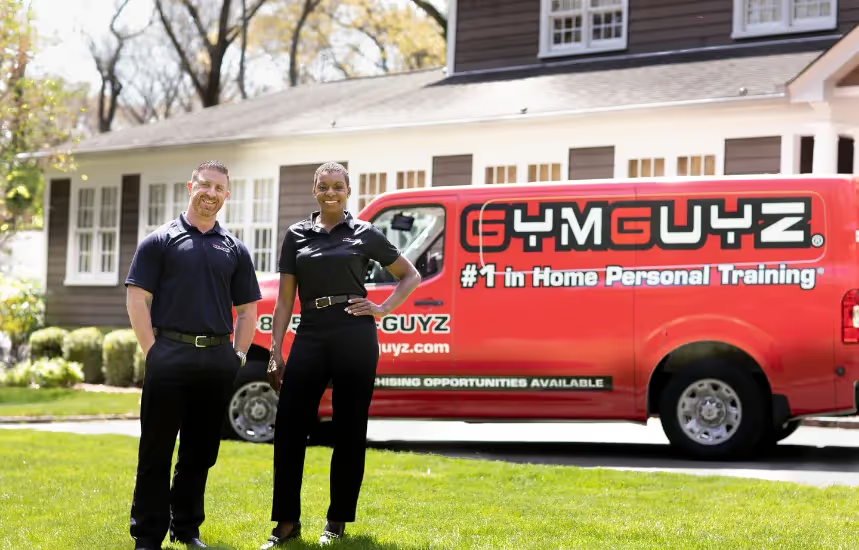
Founded in: 2008
Franchising since: 2013
Franchise Units: 200+
Initial investment range: $56,072 - $121,673
Initial Franchise Fee: $35,000
Royalty: 6%
Model Type: Mobile Personal Training
Key Advantage:There is no need for a physical location—trainers carry the gear to their clients, whether in homes or at businesses. Reduced overhead, with no lease and no facility to maintain, makes this a unique way to enter the fitness business.

Founded in: 2010
Franchising since: 2014
Franchise Units: 1,870
Initial investment range: $313,200 - $485,100
Initial Franchise Fee: $180,600
Royalty: 7%
Model Type: Functional Group Training
Key Advantage: Creating a community while taking up less space than a conventional gym is possible with high-intensity workouts of 45 minutes or so in a group setting. These technology-driven workouts bring a new level of engagement and entertainment to the workout experience. What is perhaps most interesting—and what I want to explore with you here—is how this particular club has found a way to keep its members coming back (and not just at 7 p.m. every other Wednesday).

Founded in: 2009
Franchising since: 2011
Franchise Units: 450 worldwide
Initial investment range: $151,100 - $213,100
Initial Franchise Fee: $49,600
Royalty: 8%
Model Type: Group Training/Boot Camp
Key Advantage: Workouts that last 30 minutes and are of a high intensity, carried out in a supportive group setting. The facilities are small (1,500-2,500 sq ft) and use minimal equipment, making them cheaper to operate than many other fitness concepts. Members seem to like the supportive environment and the way that instructors help them get through the workouts. The studios seem to develop strong communities. The marketing systems that the franchise uses seem to result in strong member acquisition.
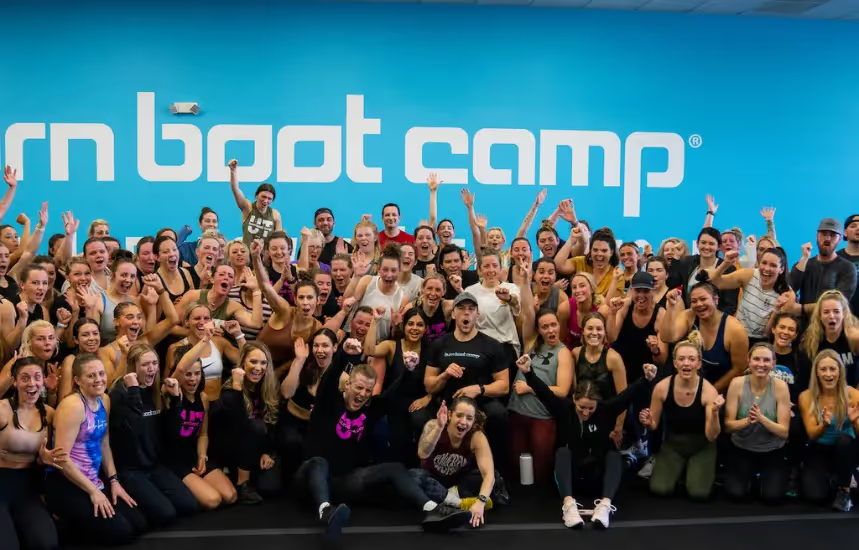
Founded in: 2012
Franchising since: 2015
Franchise Units: 151
Initial investment range: $148,330 - $353,150
Initial Franchise Fee: $43,000
Royalty: 8%
Model Type: Group Training/Boot Camp
Key Advantage: Mainly aimed at women, with concurrent childcare in the mornings. The tiny 45-minute camp workouts build strong community ties and are thus very high in retention.
{{quiz-blue}}

Founded in: 2007
Franchising since: 2012
Franchise Units: 855
Initial investment range: $167,967 - $280,446
Initial Franchise Fee: $105,317
Royalty: 7%
Model Type: Reformer Pilates Studio
Key Advantage: It provides access to reformer Pilates in a way that is affordable and makes it available to more people than in the past. With classes that are not on a one-to-one basis, it keeps lowering the price per participant to the point where I can now comfortably sign up and anticipate seeing some good results over the next few months.
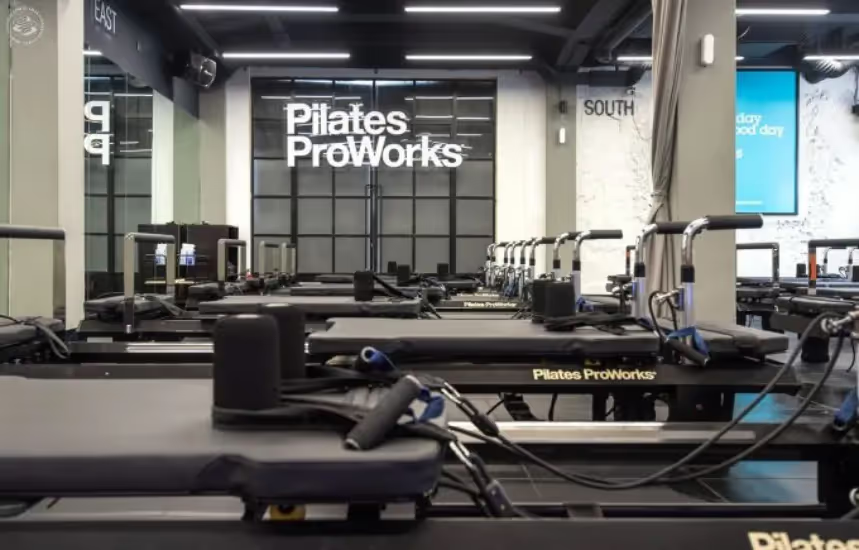
Founded in: 2009
Franchising since: 2015
Franchise Units: 760
Initial investment range: $208,670 - $364,903
Initial Franchise Fee: $45,000
Royalty: 5%
Model Type: Reformer Pilates/Fitness Studio
Key Advantage: Merges classical Pilates with up-to-date fitness techniques using the proprietary FitFormer apparatus. Studio is upscale and swank, attracting the kind of client who pays top dollar for pay-to-play upscale services. Working with that kind of client necessitates a multi-prong approach. In this case, the studio combines both full-body and core work into sessions that may also involve the barre or TRX-like suspension training.

Founded in: 1997
Franchising since: 2015
Franchise Units: 205
Initial investment range: $87,600 - $87,600
Initial Franchise Fee: $39,500
Royalty: 6%
Model Type: Assisted Stretching Studio
Key Advantage: Originated the assisted stretching studio model, with a focus on practitioner-assisted flexibility training. Targets active adults, seniors, and athletes who want improved recovery and mobility. Being positioned in the medical/wellness space is uniquely benefiting StretchLab by allowing the studio to create opportunities for partnerships and referrals within the healthcare community.
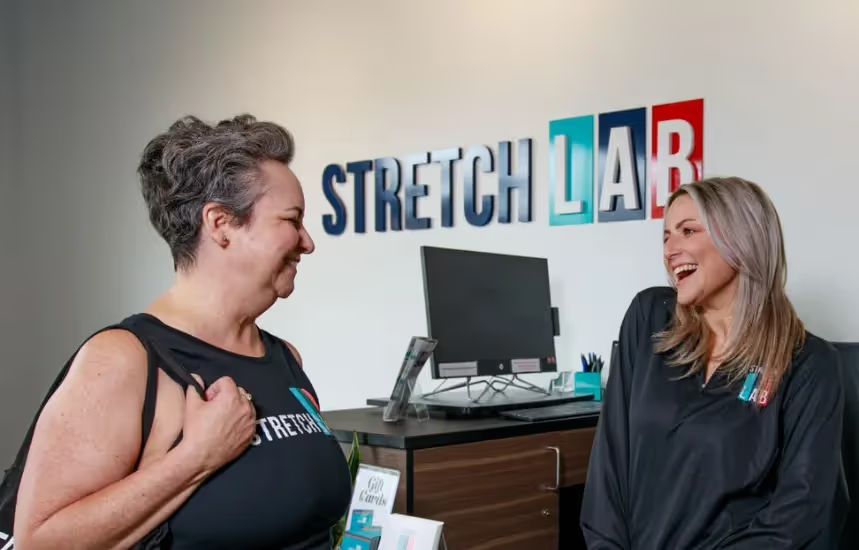
Founded in: 2001
Franchising since: 2009
Franchise Units: 800+
Initial investment range: $156,145 - $199,965
Initial Franchise Fee: $137,195
Royalty: 8%
Model Type: Assisted Stretching Studio
Key Advantage: Satisfies the increasingly high demand for recovery and flexibility services. Has broad demographic appeal, from athletes to seniors, allowing for several different revenue streams through both individual and group formats.
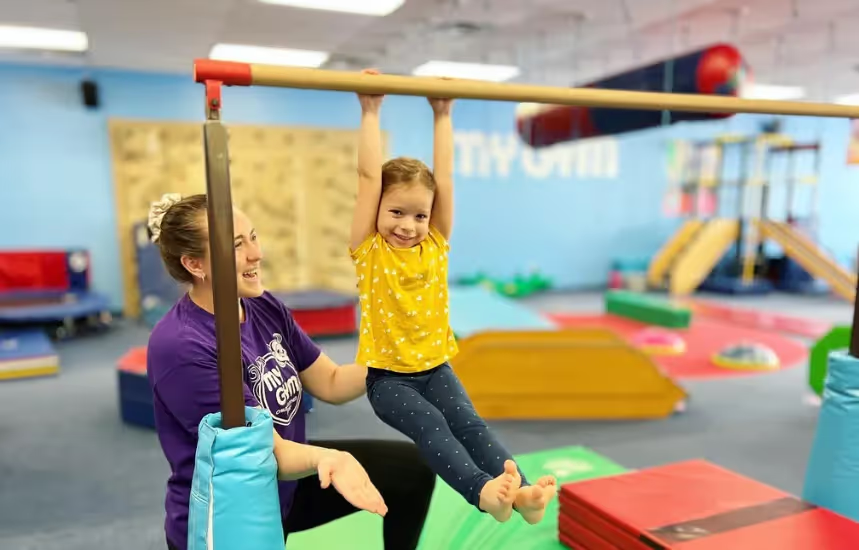
Founded in: 1983
Franchising since: 1994
Franchise Units: 694
Initial investment range: $168,400 - $249,700
Initial Franchise Fee: $25,000
Royalty: 7%
Model Type: Children's Fitness/Development
Key Advantage: Targets kids' fitness and development from 6 weeks to 10 years old. Combines structured physical activity with play-based, developmental learning in a powerful curriculum. Classes, open play, birthday parties, and seasonal camps provide multiple revenue streams.

Founded in: 1981
Franchising since: 1992
Franchise Units: 345
Initial investment range: $159,500 - $394,000
Initial Franchise Fee: $139,500
Royalty: 8%
Model Type: Children's Fitness/Development
Key Advantage: Provides developmental programs and classes for children from 4 months to 12 years. Derives a number of revenue streams from classes, camps, parties, and special events.

Founded in: 2001
Franchising since: 2009
Franchise Units: 760
Initial investment range: $191,650 - $439,250
Initial Franchise Fee: $98,750
Royalty: 6%
Model Type: Barre Fitness Studio
Key Advantage: Set up a recognized unique business model in the barre exercise field. It attracts mainly female customers who want intense yet safe workouts in a space that feels safe and accommodating.
{{quiz-blue}}
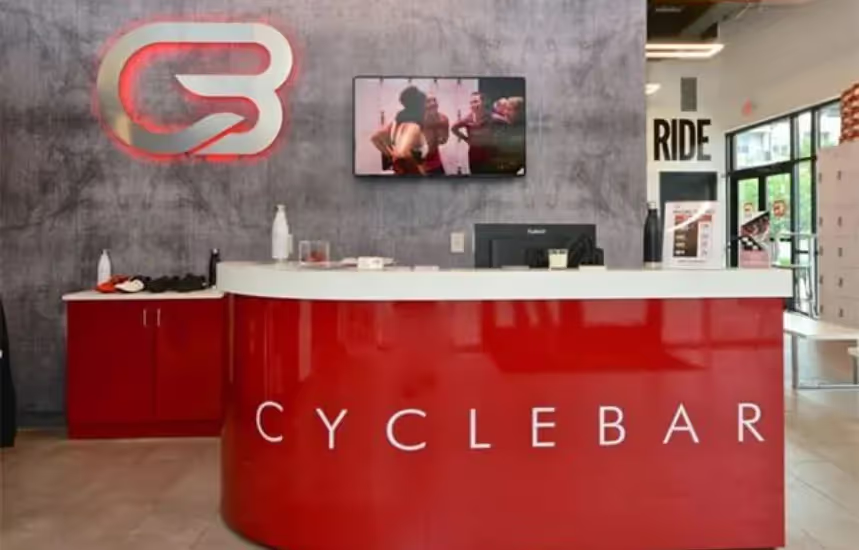
Founded in: 2014
Franchising since: 2015
Franchise Units: 150
Initial investment range: $319,150 - $497,200
Initial Franchise Fee: $153,500
Royalty: 6%
Model Type: Indoor Cycling Studio
Key Advantage: Indoor cycling experience at its best. The rooms are not just effective; they're also beautiful. A terrific sound system pumps out the beats of the heart-pumping music that helps keep a cycling class ignited, while a Polyvision projector array ensures that no one in the class misses a single second of what is going on in our 'silent movie'. The HD technology used to create the Polyvision effect really can't be appreciated fully within these words.

Founded in: 1979
Franchising since: 1982
Franchise Units: 7,760
Initial investment range: $2,405 - $3,200
Initial Franchise Fee: $1,250
Royalty: 6%
Model Type: Dance Fitness Classes
Key Advantage: For more than 40 years, a leading name in dance fitness. Startup costs are among the lowest in the fitness franchise world. Many franchises operate out of rented spaces and have few dedicated facilities. A relatively small initial investment can grow as your membership grows. Classes are easily scalable and can be offered from a variety of venues.

Founded in: 1992
Franchising since: 2004
Franchise Units: 100+ worldwide
Initial investment range: $706,057 - $1,465,507
Initial Franchise Fee: $30,000
Royalty: 4-6%
Model Type: MMA/Combat Sports Fitness
Key Advantage: Uses the powerful UFC brand to bring in participants who are enthusiastic about boxing, kickboxing, and mixed martial arts. Combines conventional gym equipment with areas for combat sports training. Has both traditional memberships and specialized training programs for a diverse array of income streams.
Even through economic ups and downs, the fitness business has been, without a doubt, very resilient and has experienced remarkable growth. Individuals are more health-conscious than ever, and that trend shows no signs of slowing.
The worldwide health and fitness club market is set to hit $140 billion in 2030, leaving ample opportunity for this new breed of owners to thrive.
Finding the right fit means looking beyond just the brand name. Here's what to consider when evaluating gym franchises:
There is a wide variation in the amount of investment required, depending on the concept. Small boutique studios might ask for $100,000, while full-service gyms can cost more than $5 million. Franchises that most people recognize and that are quite popular typically fall in a range that we've built out around: $300,000 to $1 million, which covers such things as franchise fees, equipment, build-out, and initial marketing.
Certainly, gym franchises can be quite lucrative when they're managed well. Their foundational nature provides a recurring revenue stream that ensures stability, but quite a few levers exist that can affect how much money any particular franchise makes. Among these:
No, most gym franchisors don't require a background in fitness. They're looking for people who are business-minded, have leadership skills, and are oriented toward customer service. The franchisor provides training on fitness-specific operations. However, having a passion for fitness helps a lot with engaging members and understanding the industry.
Usually, gym franchises provide total support. This means right from the start, you get training (usually 1-2 weeks) to help you learn the business. They help you choose the location for your franchise, design the facility, and find the equipment you will need (usually thousands of pieces of workout gear) to get started.
Franchises also provide help with marketing. Before you open, they will give you advice about how to advertise your new venture. Once you’re open, they will help you continually improve your operation. They do that in various ways. Most commonly, they provide an operational manual that tells you what you need to know to run a successful franchise. (You will probably be given some sort of manual to read before you even open up!)
Although no franchise is completely passive, many gym concepts can become semi-passive over time. By hiring a solid general manager and a strong team, many owners reduce their involvement to 10 to 20 hours a week after the initial phase of starting up. Concepts that are open 24 hours a day and that have minimal staffing tend to be more hands-off than full-service or boutique gyms.
The fitness business provides sturdy profit potential, but it isn't a cakewalk. Gym franchisors report that it takes most gym franchises 12-24 months to reach breakeven, with mature locations generally seeing profit margins between 15-25% after all expenses.
What makes profit happen? The first thing that makes profit happen is retention. Sure, it costs a lot less to keep existing members than to replace them time and again. But the second thing is something that we might consider numb and dumb. That's location quality. And the third thing? That's operational efficiency, or not managing to lose money either in everyday operations or in the way we might be working with our members. The fourth thing, which most business outlets ignore, is revenue stream expansion. In my view, that's the least dangerous piece of the puzzle.
The benefit of a franchise is that you are adhering to a tested model instead of trying to work out everything on your own. Franchisees get clear direction and assistance in how to price, market, and operate a business based on a system that has been proven across many different locations.
Gym franchises build revenue through multiple streams:
Primary Income:
The beauty of the gym model is that your base membership revenue covers most fixed costs, while additional services create higher profit margins that significantly boost overall profitability.
Owning a gym, like any business, requires commitment and direct involvement, particularly in the initial phase. But for those who are able to build effective systems and the right team, it can be as profitable and rewarding as any other kind of business. And while we all understand the profit motive and shouldn't shy away from it, as we also teach in other chapters, there's a rewarding aspect of running a gym that stretches beyond dollars to a healthier, happier life for the human beings inside your gym.